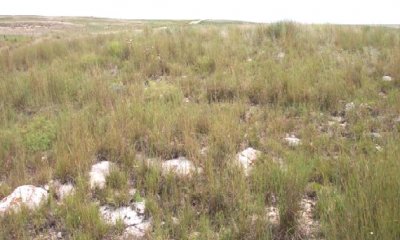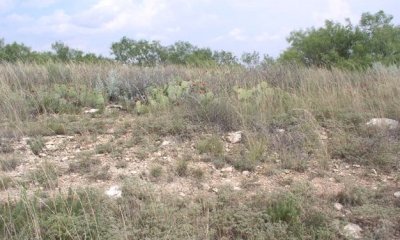
Very Shallow 19-26" PZ
Scenario model
Current ecosystem state
Select a state
Management practices/drivers
Select a transition or restoration pathway
-
Transition T1A
Absence of disturbance and natural regeneration over time, may be coupled with excessive grazing pressure
More details -
Restoration pathway R2A
Adequate rest from defoliation, followed by reintroduction of historic disturbance regimes
More details -
Transition T2A
Absence of disturbance and natural regeneration over time, may be coupled with excessive grazing pressure
More details -
No transition or restoration pathway between the selected states has been described
Target ecosystem state
Select a state
Description
The Mid/Tallgrass Dominant Community is a balanced mixture of tall, mid and a few short grasses, a variety of perennial forbs, and scattered low growing short woody shrubs. Little bluestem and sideoats grama are the dominant species. There are short shrubs such as feather dalea and catclaw mimosa. Common forbs are dotted gayfeather, plains actinea, plains zinnia and baby white aster.
Submodel
Description
Midgrasses dominate the site along with some low growing shrubs. Some increase in perennial threeawn. Sideoats grama and blue grama are still the major grasses. Some increase in perennial forbs.
Submodel
Description
The Forb/Pricklypear Dominant Community is composed of shortgrasses, annual forbs, short shrubs, and pricklypear. There is also an increase in bare ground. The annual production potential is lower too.
Submodel
Mechanism
With heavy continuous grazing and no fires, the Midgrass/Tallgrass State will transition into the Midgrass/Shortgrass State.
Mechanism
With Prescribed Grazing and Prescribed Burning conservation practices, the Midgrass/Shortgrass State can revert back to the Midgrass/Tallgrass State.
Relevant conservation practices
| Practice | External resources |
|---|---|
|
Prescribed Burning |
|
|
Prescribed Grazing |
Model keys
Briefcase
Add ecological sites and Major Land Resource Areas to your briefcase by clicking on the briefcase (![]() ) icon wherever it occurs. Drag and drop items to reorder. Cookies are used to store briefcase items between browsing sessions. Because of this, the number of items that can be added to your briefcase is limited, and briefcase items added on one device and browser cannot be accessed from another device or browser. Users who do not wish to place cookies on their devices should not use the briefcase tool. Briefcase cookies serve no other purpose than described here and are deleted whenever browsing history is cleared.
) icon wherever it occurs. Drag and drop items to reorder. Cookies are used to store briefcase items between browsing sessions. Because of this, the number of items that can be added to your briefcase is limited, and briefcase items added on one device and browser cannot be accessed from another device or browser. Users who do not wish to place cookies on their devices should not use the briefcase tool. Briefcase cookies serve no other purpose than described here and are deleted whenever browsing history is cleared.
Ecological sites
Major Land Resource Areas
The Ecosystem Dynamics Interpretive Tool is an information system framework developed by the USDA-ARS Jornada Experimental Range, USDA Natural Resources Conservation Service, and New Mexico State University.




